NIL
Why have Real Madrid partnered with Louis Vuitton?
Last week, French fashion house Louis Vuitton announced a partnership with Real Madrid, establishing a formal association between arguably the world’s most recognisable luxury clothing brand and European football’s most storied club. Louis Vuitton is not the first luxury label to make the crossover into the sport. Advertisement Manchester City announced an agreement with Italy’s […]
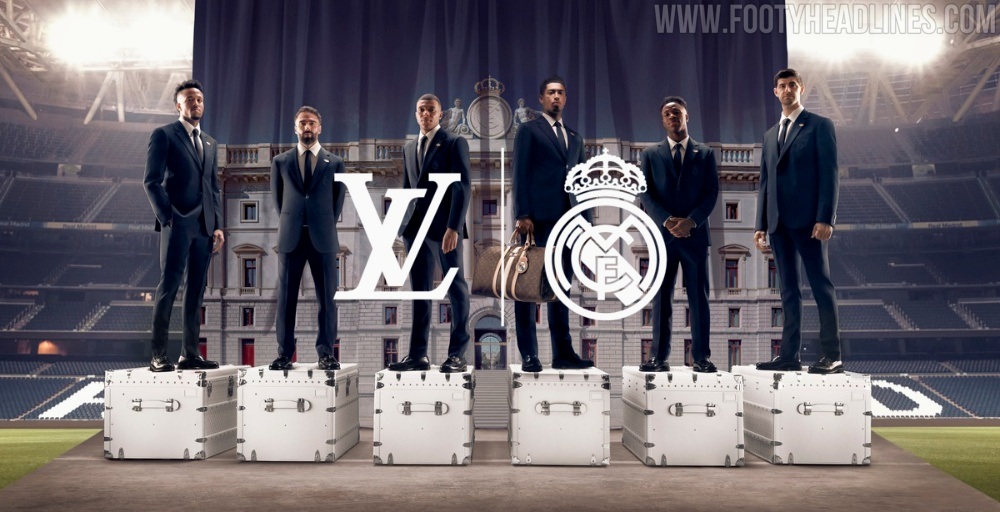

Last week, French fashion house Louis Vuitton announced a partnership with Real Madrid, establishing a formal association between arguably the world’s most recognisable luxury clothing brand and European football’s most storied club.
Louis Vuitton is not the first luxury label to make the crossover into the sport.
Advertisement
Manchester City announced an agreement with Italy’s C.P. Company in 2024, which became their official fashionwear partner. That followed the club’s long-term deal with Dsquared², which started in 2016 before ending in their treble-winning 2023 season, where City players and manager Pep Guardiola would arrive at away matches in the Champions League wearing outfits made by that designer brand.
It is not just City, though — there are countless examples of similar deals in the Premier League.
Tottenham Hotspur’s victorious Europa League squad arrived at the stadium for that final last month wearing suits designed by Kiton, the Italian company that has been the club’s official formalwear partner since 2023. Their north London neighbours Arsenal have recently looked more locally for style inspiration, collaborating with Labrum London, whose founder Foday Dumbuya is an Arsenal supporter, on last season’s away kit and an accompanying lifestyle collection.
It is increasingly common around wider Europe, too.
In Italy’s Serie A, Juventus have partnered with Loro Piana since 2021, and Milan collaborated with Off-White for last season’s fourth kit. Madrid themselves previously had an association with Zegna, so they are not breaking new ground in collaborating with an esteemed designer brand.
This new deal is reportedly worth up to €7million (£5.9m; $8.1m at current rates), although a Real Madrid source — who did not wish to be named as they did not have permission to discuss its terms — described that figure as “optimistic”.
Either way, the prestige of Louis Vuitton, one of the world’s most recognisable symbols of luxury in fashion, is singular.

Milan forward Santiago Gimenez in last season’s fourth kit, designed by Off-White (Pier Marco Tacca/Getty Images)
“These have been happening for years now, it shows a shift on both sides,” says sports business consultant and journalist Daniel-Yaw Miller. “Not just in the way clubs see themselves, but in how brands see themselves.
“There’s so much synergy between iconic fashion brands and football clubs. They’re huge cultural entities with so much history and heritage — like how fashion houses have their heritage tied to collections, football clubs have so much history tied to their kits, aesthetic and badges over time. It’s the same as how fashion houses look at patterns and designs over time.”
Advertisement
Louis Vuitton is no stranger to the world of football either. It created a commemorative ball for the 1998 World Cup in its homeland of France and has designed the tournament trophy’s travelling case since 2010.
American music artist Pharrell Williams has served as its men’s creative director since 2023, and football stars including Jude Bellingham, Marcus Thuram, Jadon Sancho, Jules Kounde and Madrid’s marquee summer 2025 signing Trent Alexander-Arnold were in attendance at his first runway show. Williams even included a pair of “football trainers” in their spring/summer collection this year, retailing at an eyewatering £885 ($1,200).
Five years before their current owners at Qatar Sports Investment bought Paris Saint-Germain in 2011, the Ligue 1 club released an away kit inspired by Louis Vuitton’s colours and design — albeit without an official link to the brand.
Given their shared home city and emphasis on fashion, PSG may also have been a prime candidate for the company’s first official club partnership. Still, Miller says Madrid’s prestige and the large personal brands of their star players make it an obvious match.
“Louis Vuitton has always had small relationships in sport,” says Miller. “Whether that’s creating trophy cases or limited releases around prestigious occasions. But a few years ago, LVMH, Louis Vuitton’s parent company, decided that sport would be its one major cultural push.
“You saw that with their strategy around the Olympics (held in Paris and across France last August), where they were a premium sponsor and paid big amounts to have their brand visible. They paid (a reported) $1billion to sponsor Formula One for 10 years. But if you want to show up on a global stage, you want to be associated with football.
“They started working similarly to how they did with Formula One, informally dressing Jude Bellingham for certain events before making him an official ambassador, like they did with Lewis Hamilton (who became an ambassador for Dior, another brand under the LVMH banner, in 2024). Then, if you want to be in football, there’s no bigger entity than Real Madrid.”
Advertisement
Bellingham partnered with Louis Vuitton last summer, following his England team-mate Jack Grealish signing a seven-figure deal to become a Gucci ambassador in 2022. Bellingham — who is also linked to Skims, a clothing brand founded by Kim Kardashian — was the third major athlete to sign as a “friend of the house” after current Wimbledon and French Open tennis champion (and known madridista) Carlos Alcaraz and NBA basketball star Victor Wembanyama, who was raised in a suburb of Paris. Last year, fellow Real Madrid fan Rafael Nadal combined with long-time rival Roger Federer for a photoshoot organised by Louis Vuitton in the Italian Dolomites.
Jude Bellingham for Louis Vuitton. The Maison and @Pharrell are pleased to welcome English footballer @BellinghamJude as the newest Friend of the House — embarking on a collaborative adventure in Menswear.#JudeBellingham #PharrellWilliams #LouisVuitton pic.twitter.com/KwIJolDiNg
— Louis Vuitton (@LouisVuitton) August 16, 2024
Bellingham is one of several superstar players at Madrid whose celebrity has transcended football. Kylian Mbappe is one of the world’s most famous athletes. Fellow forward Vinicius Junior is one of the faces of the Brazil national team with more than 50million Instagram followers, and newcomer Alexander-Arnold, who is frequently spotted at major fashion and sporting events, also represent much more from a branding perspective.
“Madrid have a lot of players who are loved by Gen Z audiences,” says Jordan Clarke, founder of Footballer Fits, an Instagram page with more than 800,000 followers which celebrates the relationship between football and fashion.
“Louis Vuitton is such a prestigious brand, and they’ve historically not targeted these audiences. But I think with the likes of Vinicius, Bellingham, Mbappe, (their team-mate Eduardo) Camavinga, they’re reaching new audiences with the love people have for these athletes. It’s a valid seal of approval for these brands for the youth.
“The athletes of today, especially those high-profile Madrid players, are almost creatives themselves. They’re going to be posting content onto their socials wearing Louis Vuitton, taken from the players themselves on their iPhones. That makes it a player-backed brand.”

Louis Vuitton will hope to capitalise on Madrid players’ global profiles (Louis Vuitton x Real Madrid Partnership Images)
This summer’s Club World Cup in the United States will be the first opportunity for the record 15-time European champions to show off this new collaboration.
According to the blurb in the accompanying press release, “the collection will be worn by the teams and includes tailored garments, shoes, accessories and luggage,” and the items will be worn at major travel opportunities and events.
Advertisement
LVMH has reported first-quarter revenues of €20.3billion (£17.3bn/$23.5bn at current rates) last month, down two per cent on the same period in 2024. Part of that is due to a five per cent sales decrease in the company’s fashion and leather goods division, with Europe being the only market that posted growth (two per cent). According to Miller, pushing the brand in front of new demographics is how LVMH is trying to drive a new wave of enthusiasm around its flagship brand.
“For a long time, luxury fashion houses have operated on the belief that the exclusivity of their brand will drive enough business to generate profit, despite the high price point,” says Miller. “But in the last three or four years, luxury brands have struggled to keep up. Sales and profits have been declining, so LVMH is looking for new cultural avenues to drive excitement.”
In front of a new audience in America, perhaps there’s no better time for Louis Vuitton to announce the partnership as Madrid aim to become the first winners of FIFA’s revamped, greatly expanded and rescheduled Club World Cup.
Additional reporting: Mario Cortegana and Guillermo Rai
(Top photo: Madrid’s Eder Militao, Thibaut Courtois and Vinicius Jr in their new suits; Louis Vuitton x Real Madrid Partnership Images)
NIL
Trump Order Targets NIL and Protects College Sports
On July 24, 2025, President Trump issued an executive order relating to college athletics and name, image, and likeness (NIL) payments. This order seeks to limit third-party NIL payments and require universities to preserve Olympic sports programs as they work to implement the House settlement, which permits universities to engage in direct revenue sharing contracts with their athletes. […]

On July 24, 2025, President Trump issued an executive order relating to college athletics and name, image, and likeness (NIL) payments. This order seeks to limit third-party NIL payments and require universities to preserve Olympic sports programs as they work to implement the House settlement, which permits universities to engage in direct revenue sharing contracts with their athletes. This order also aims to prevent, as stated in a published fact sheet, “endless litigation seeking to eliminate the basic rules of college sports.” The legal significance and correctness of this order, which implicates student athletes” right to contract, the anti-commandeering principle of the United States Constitution as applied to state universities, and other significant legal matters, will be hotly debated.
Regardless of this executive order’s direct legal impact, however, it displays the competing policy positions and concerns at play in this area. As has been widely reported, many universities in the so-called “Power Four” conferences intend to provide a significant majority of revenue sharing funds to their football and/or men’s basketball teams. These sports are the revenue drivers for most institutions and financially subsidize other programs. To defray the cost of revenue sharing, some universities have implemented or considered cuts to non-revenue-generating sports and/or various roster limits. This executive order, however, states plainly the President’s intent to ensure that such Olympic sports are preserved at the collegiate level. This creates uncertainty as to how and whether universities can focus their funds on football and men’s basketball, as many intend.
Perhaps most significantly for universities, this order requires that “any revenue-sharing permitted between universities and collegiate athletes should be implemented in a manner that protects women’s and non-revenue sports.” Providing a majority of revenue sharing payments to football and men’s basketball players would not appear to comply with this intent. Although stated in the executive order as more of a policy goal, the major question it begs is whether the Executive Branch interprets Title IX as requiring such balanced implementation of revenue sharing payments. If so, this would absolutely prohibit any football and men’s basketball-focused model and force many universities back to the revenue-sharing drawing board.
The competing policy considerations and legal issues reflected in this executive order only make the need for federal legislation in this area even more apparent. Currently, federal courts are considering issues such as college athlete employment, as well as the legality of the House settlement itself. Legal disputes relating to whether and which third-party NIL payments will be permitted and whether Title IX applies to such payments will come in the near future. This executive order attempts to resolve these issues with a priority on protecting women’s and Olympic college sports programs. However, aside from additional litigation this order might invite, doing so could threaten the projected financial model for college football and men’s basketball. The only manner to definitively establish law and policy around these questions is through federal law.
In these uncertain times, universities require partners who can assist them with not only fighting and interpreting legal matters, but also with shaping the legal landscape itself. To the extent universities wish to advocate for a future in which they can financially prioritize certain sports or avoid apparent legal problems, they must be prepared to actively engage in the federal legislative process to make their interests known. Otherwise, as discussed in the executive order, “the basic rules of college sports” will be decided around them.
SAVING COLLEGE SPORTS: Today, President Donald J. Trump signed an Executive Order to protect student-athletes and collegiate athletic scholarships and opportunities, including in Olympic and non-revenue programs, and the unique American institution of college sports.
NIL
All
Women’s college volleyball has exploded over the past few seasons, garnering record attendance and viewership numbers in the process. During the NIL era especially, volleyball student-athletes have become some of the most prolific brand ambassadors and content creators. Now, two of the nation’s best have landed sneaker deals with a disruptor brand in the space. […]
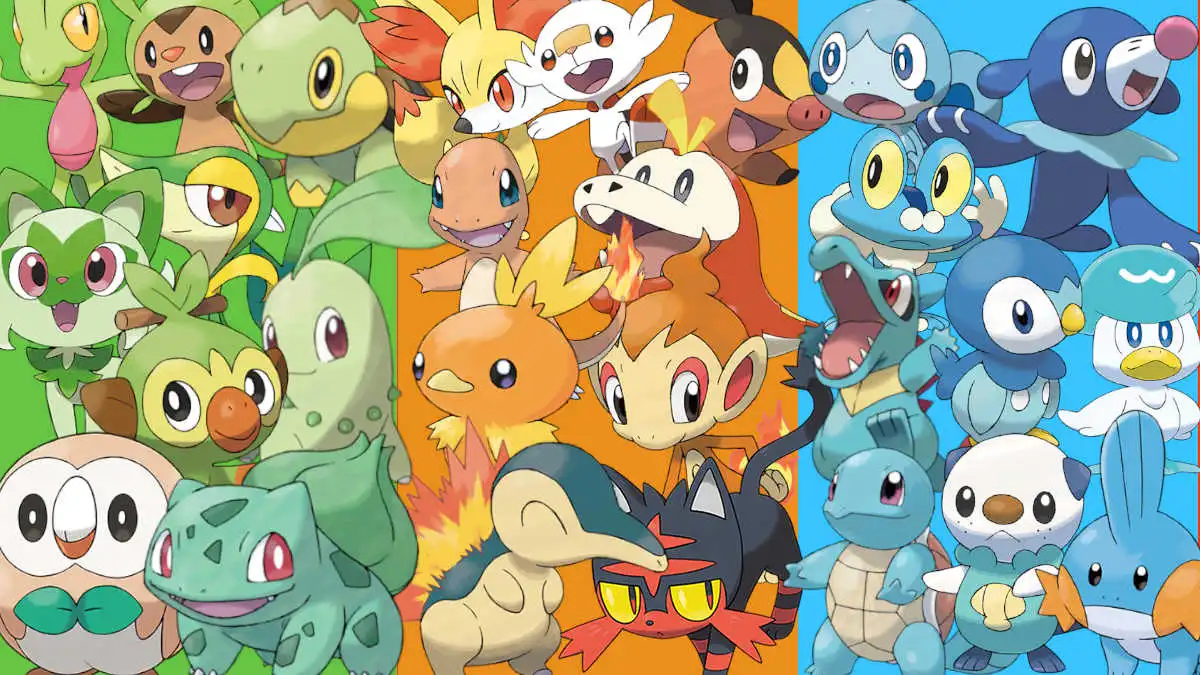

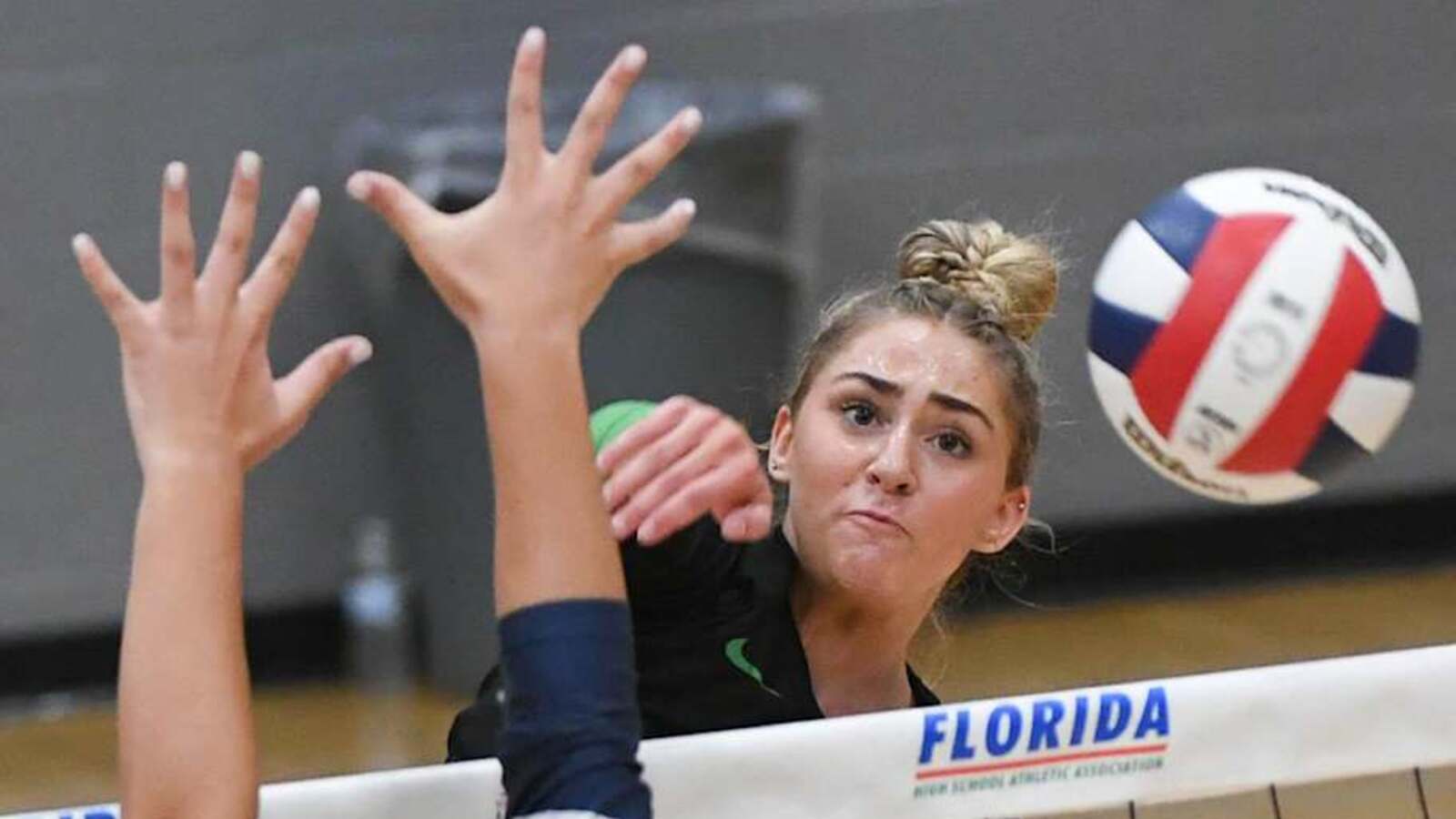
Women’s college volleyball has exploded over the past few seasons, garnering record attendance and viewership numbers in the process. During the NIL era especially, volleyball student-athletes have become some of the most prolific brand ambassadors and content creators. Now, two of the nation’s best have landed sneaker deals with a disruptor brand in the space.
Avoli – the only athletic brand dedicated exclusively to women and girl volleyball players – has signed All-American duo Andi Jackson of Nebraska and Izzy Starck of Penn State, adding two stars to their growing NIL roster. A season ago, the Portland-based brand celebrated its first birthday with a $2.1 million funding round, a new exclusive retail partner in SCHEELS and seven college athletes joining the brand.
Jackson and Starck are the highest-profile signings to date and mark a significant moment for Avoli.
“I chose to partner with Avoli because of how they talked about women sports and how they are giving girls shoes just for them,” shared the defending Freshman of the Year and National Champion, Starck. “I love how there is a shoe company that is meant just for volleyball.”
NIL
Is Texas the most valuable football team in the U.S.?
AUSTIN, Texas — For many Texas Longhorns fans, you can’t put a price on their favorite team. But what if it’s a multi-billion dollar valuation? What You Need To Know The Athletic, which is owned by the New York Times, posted its rankings of every Power 4 team by how much they would sell for Texas came […]
AUSTIN, Texas — For many Texas Longhorns fans, you can’t put a price on their favorite team. But what if it’s a multi-billion dollar valuation?
The Athletic, which is owned by the New York Times, posted its rankings of every Power 4 team by how much they would sell for. The outlet used each team’s revenue over the past three years and data from professional transactions, with the SEC and Big Ten being guided by NFL and NBA sales and the ACC and Big 12 being guided by MLB and NHL sales.
“For each school in a Power 4 conference (plus Notre Dame), we factored in everything from prestige and championships to facility renovations, population trends and realignment scenarios,” the article said. “That means treating Notre Dame more like the Los Angeles Lakers and Boston College more like the Kansas City Royals.”
With all that being considered, Texas came out on top with a projected price of $2.38 billion.
The Athletic said no one comes close to the Longhorns’ revenue, with the team being the only one to top $200 million in the most recent financial reports. The next closest program had $25 million less revenue.
The article said that a sale of the Longhorns, if that were allowed, would be comparable to the sale of the Carolina Panthers in 2018.
The next team in the Lone Star State on the list was Texas A&M at No. 15. The Aggies were valued at just under $1 billion, at $973 million, and ranked ninth in the SEC.
“The Aggies have the rabid fan base and demographic upside to be higher. Money has also never been an issue at a program that paid Jimbo Fisher the biggest buyout in college football history (about $77 million),” the article said. “But we’re also considering wins and losses because of the money victories bring.”
The Athletic called Texas A&M the “nation’s biggest underachiever.”
Rounding out the top of the list was TCU at No. 30 with a $523 million valuation.
NIL
Tech’s transfer class ranked No. 1
LUBBOCK, Texas – Softball America released its rankings of the top transfer portal classes in the country on Monday which featured the Red Raiders at No. 1 for the second consecutive season. Texas Tech finished its historic 2025 season as the National Runners-Up after advancing to its first ever Women’s College World Series. Gerry Glasco and […]

Gerry Glasco and company added All-Americans Mia Williams, Taylor Pannell and Jasmyn Burns as well as Kaitlyn Terry, Jackie Lis, Desirae Spearman and Lagi Quiroga.
“We wanted to add depth and experience in as many places as possible as we try to win the National Championship this coming season,” said Glasco. “Obviously it will be very difficult to improve upon our 2025 season, but as a staff we feel like we have made tremendous improvements as we enter our second season at Texas Tech.”
The Red Raiders lost two key seniors in Demi Elder and Alexa Langeliers and had a focus on replacing their production as well as adding more depth in the circle and behind the plate.
“Pitching, catching and infield were our priorities as far as depth and experience,” Glasco said. “We feel like we have added tremendous talents to our roster and gained more postseason experience through the new additions coming in.”
Williams, Pannell and Terry all played in the WCWS last season while Burns and Quiroga played in the NCAA Regionals. Along with postseason experience, the newcomers add a lot of power to Glasco’s lineup as the seven athletes combined to hit 105 home runs last season. The Red Raiders finished with 60 long balls last season and had only one player finish with double digits in that category.
“The other critical point of emphasis was power on the offensive side,” Glasco said. “We have added seven athletes that hit 105 home runs in 2025 to our roster, a roster that returns just 45 home runs from last season. We felt that adding extra base hits, both doubles and home runs, was the most important aspect of our offense heading into next season.”
Expectations for the Red Raiders were high going into last season, and they might just be even higher heading into the 2026 season.
The Newcomers:
Mia Williams finished the 2025 season with 19 home runs and was a 2025 NFCA Second Team All-American as well as All-SEC Second Team and NFCA All-Gulf Region First Team honoree. She hit .335 with 44 RBI, recording 18 multi-hit games and was in on 18 double plays from the second base position.
Taylor Pannell spent time at third base and outfield while in Knoxville, slashing .351/.632/.425 over 124 games. Her power took a big leap this past season, hitting 13 doubles and 16 home runs which doubled her total from her freshman campaign. She was also named to the NFCA All-Mid-Atlantic Region First Team and a 2025 CSC Academic All-American, NFCA Second Team All-American and All-SEC First Team honoree.
Jasmyn Burns slashed .455/1.006/.540 this past season with 25 home runs and 72 RBI on her way to being named an NFCA First Team All-American, NFCA All-Great Lakes Region First Team member and All-Big Ten First Team member. Burns was also named to the Big Ten All-Freshmen Team and the NFCA All-Midwest Region Third Team in her freshman year.
Kaitlyn Terry recorded her second straight 20-win season with the Bruins, going 20-5 with a 2.64 ERA and striking out 172 batters while walking just 34. The lefty helped UCLA to a 2025 WCWS appearance as she was named to the NFCA All-West Region Third Team. Her freshman season, Terry was named the Pac-12 Freshman of the Year as she posted a 21-3 record with a 2.38 ERA and 161 strikeouts.
Jackie Lis was a three-time All-MVC First Team selection and was named the MVC Player of the Year in 2024. The rising senior has played and started in 164 games and has hit .340 or better in all three seasons and post double-digit home runs in those years. For her career she is slashing an impressive .353/.690/.457 with 141 RBI and 95 walks to go along with her home run numbers. Lis was also a two-time NFCA All-Region selection and a two-time MVC Scholar-Athlete.
Desirae Spearman was named the 2024 CUSA Freshman and Player of the Year and is a two-time All-CUSA First Teamer and holds a 3.38 career ERA with 193 strikeouts while also slashing .398/.921/.540 with 38 home runs and 90 RBI for her career. Her .430 batting average this past season set a program record and her .606 on-base percentage and .977 slugging percentage were both ranked fifth in the country.
Lagi Quiroga slashed .346/.631/.443 with 12 home runs, 13 doubles and 44 RBI. She started all 58 games for the Golden Bears and collected 62 hits. Although she played catcher, Quiroga is a versatile defender able to play in several positions over the course of the season. She has amassed 109 hits, 20 doubles, 28 home runs and 75 RBI over her two-year career. Her freshman season she was named to the All-PAC 12 Freshmen Team, NFCA All-Pacific Region First Team and the Softball America Freshmen All-American team.
NIL
A Surprising Message from Kentucky Football Ahead of the 2025 Season
Finding the right message to inspire the masses is difficult following a disappointing season. That was the task for Mark Stoops and the Kentucky football program at SEC Media Days. More than a week later, I’m still perplexed by what transpired in Atlanta. Ahead of their stop in Atlanta, we expected culture to be a […]
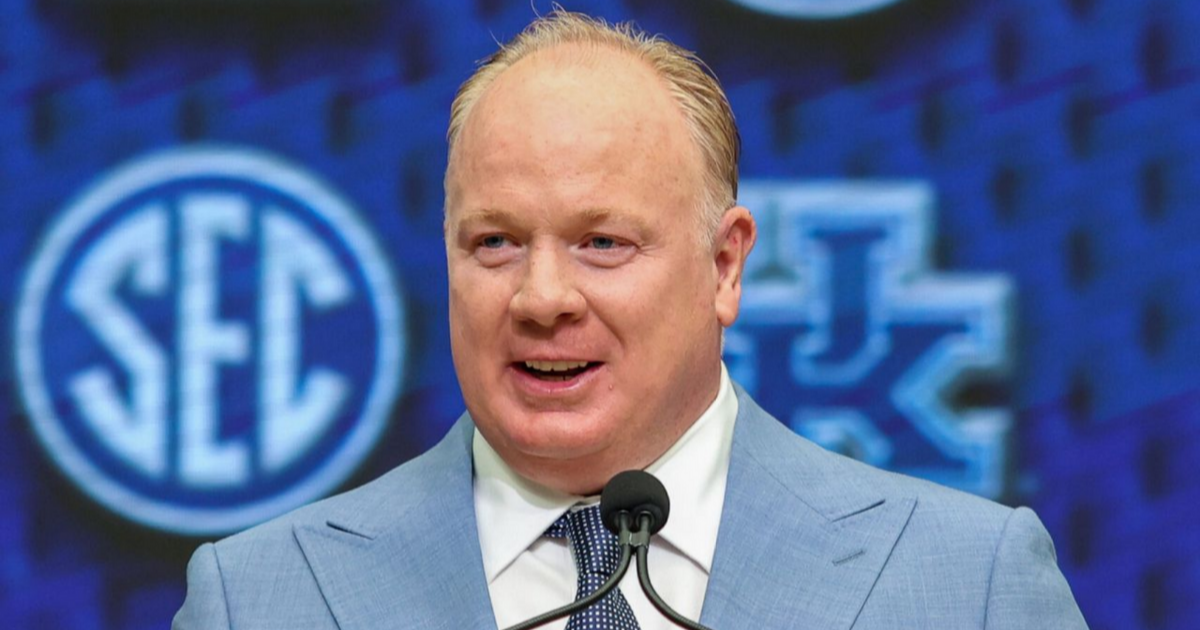
Finding the right message to inspire the masses is difficult following a disappointing season. That was the task for Mark Stoops and the Kentucky football program at SEC Media Days. More than a week later, I’m still perplexed by what transpired in Atlanta.
Ahead of their stop in Atlanta, we expected culture to be a primary talking point. Kentucky let go of the rope in the second half of the season. Instilling tenacity and resolve into the program felt like low-hanging fruit to lean into ahead of the 2025 campaign. Jordan Lovett was first up to the mic and spoke candidly about culture changes within the program.
“We are trying to change the culture, especially with a whole bunch of new guys coming in. So far we’ve bonded great together,” he said. “Every Wednesday, we do this thing called 4 for 40. A guest speaker comes in and talks about life outside of football, and on the field, just how we can be better people, like in life. So I feel like that’s been going pretty good.”
Okay, that sounds good. Next up, Alex Afari shared a similar sentiment.
“I feel like everybody’s buying in,” said Alex Afari. “You can feel it in the whole facility. Everybody’s bought into our culture, because last year was not standard at all.”
That’s what you need to hear from a football program that is bringing in 50 new players. Much of the focus this offseason has centered around team-building, yet according to others, it isn’t entirely about changing the culture.
Josh Kattus was the final player to speak with the media. Instead of sharing a similar, albeit more polished message, his response went in the complete opposite direction.
“I don’t think anything changed. We still have the same four core values,” said the Kentucky tight end. “I think there’s maybe a shift in urgency after last season, but same culture, same mindset, we just got to make sure that we’re more intentional about it this season.”
So, nothing changed? It’s not entirely nothing.
As Mark Stoops noted for the umpteenth time, the coaching staff broke down everything that went wrong and created a plan of action to solve those problems. But in the Kentucky head coach’s eyes, that’s also the case after good seasons.
“I think it’s fair for me to address last year, but not dwell on it. Anytime you have a season like that, you better take a good look at yourself. Certainly, we evaluated everything within the program, as we always do, because if you’re coming off a really good season, you have to make sure you’re capitalizing on the things you’re doing well, and maybe continue to exploit those things and get better in areas where you fall short, try to get better,” he said.
“So it’s really no different. I’m okay talking about it, but I don’t want to dwell on it, because again, I’ve stood here before two times after 10-win seasons, which didn’t happen a lot around here, and all I was worried about was the next season.”
Mark Stoops reiterated those four core values in the Main Room — attitude, toughness, discipline and
pride — as something Kentucky needs to “lean back into” to be successful.
Allow me to reiterate that messaging is hard after a 4-8 campaign. However, “nothing has changed” is a surprising message to deliver to Big Blue Nation. If you put the pieces together, what they’re essentially spelling out is that players were the problem. Adding 50 new players is the big change that will fix this program.
Mark Stoops wants the Kentucky football program to return to its hard-nosed identity, one that it got away from in the NIL era when the Wildcats got a poor rate of return from their star players. For this to work, the new guys must buy into those four core values and consistently deliver results on Saturdays. Allow me to borrow another commonly used line from Mark Stoops: “We’ll see.”
NIL
Trump Order Targets NIL and Protects College Sports
On July 24, 2025, President Trump issued an executive order relating to college athletics and name, image, and likeness (NIL) payments. This order seeks to limit third-party NIL payments and require universities to preserve Olympic sports programs as they work to implement the House settlement, which permits universities to engage in direct revenue sharing contracts with their athletes. […]
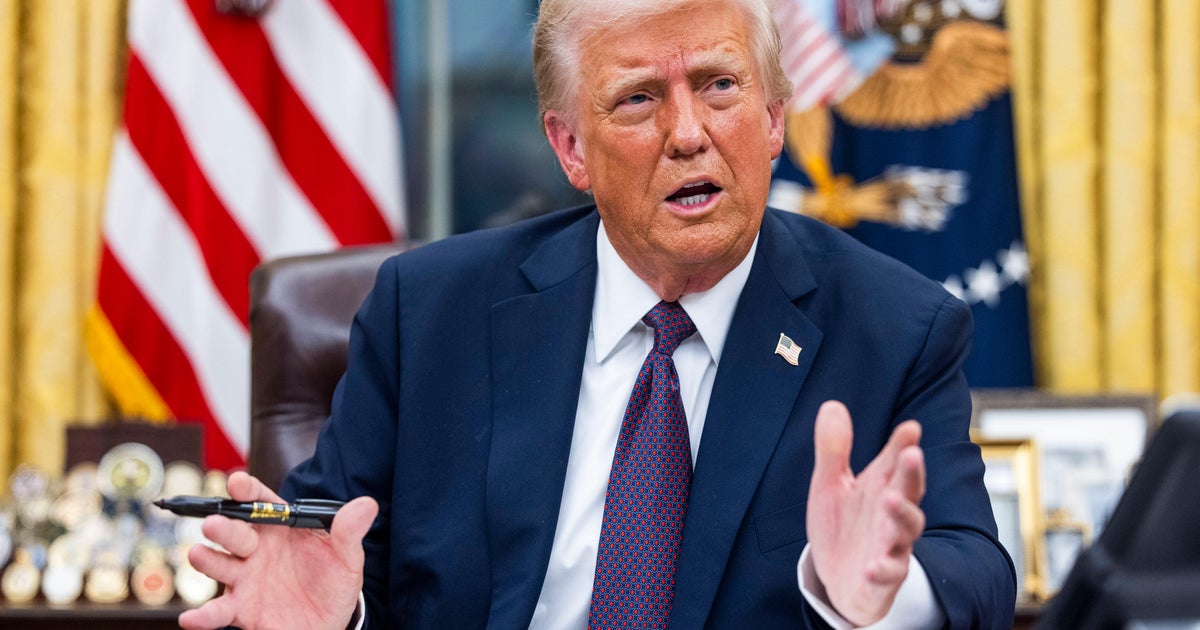
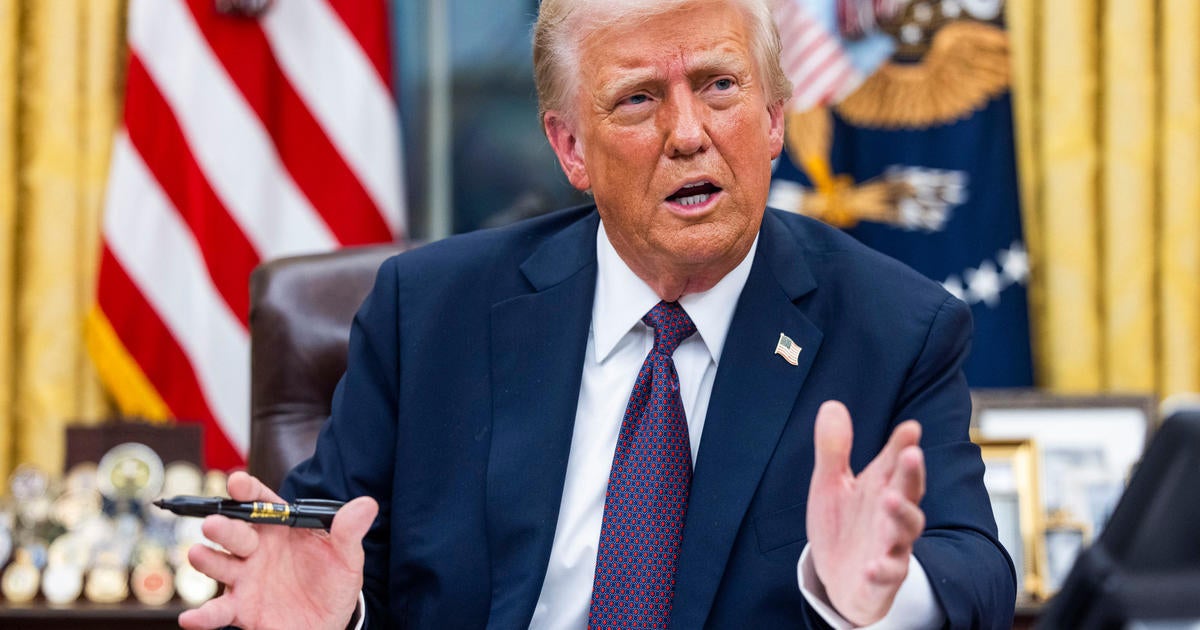
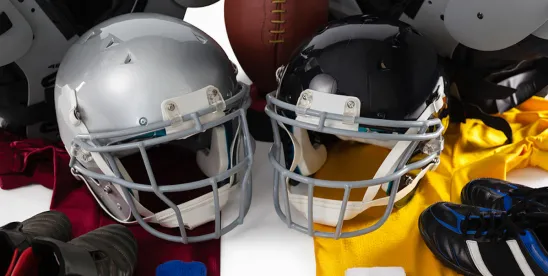
On July 24, 2025, President Trump issued an executive order relating to college athletics and name, image, and likeness (NIL) payments. This order seeks to limit third-party NIL payments and require universities to preserve Olympic sports programs as they work to implement the House settlement, which permits universities to engage in direct revenue sharing contracts with their athletes. This order also aims to prevent, as stated in a published fact sheet, “endless litigation seeking to eliminate the basic rules of college sports.” The legal significance and correctness of this order, which implicates student athletes’ right to contract, the anti-commandeering principle of the United States Constitution as applied to state universities, and other significant legal matters, will be hotly debated.
Regardless of this executive order’s direct legal impact, however, it displays the competing policy positions and concerns at play in this area. As has been widely reported, many universities in the so-called “Power Four” conferences intend to provide a significant majority of revenue sharing funds to their football and/or men’s basketball teams. These sports are the revenue drivers for most institutions and financially subsidize other programs. To defray the cost of revenue sharing, some universities have implemented or considered cuts to non-revenue-generating sports and/or various roster limits. This executive order, however, states plainly the President’s intent to ensure that such Olympic sports are preserved at the collegiate level. This creates uncertainty as to how and whether universities can focus their funds on football and men’s basketball, as many intend.
Perhaps most significantly for universities, this order requires that “any revenue-sharing permitted between universities and collegiate athletes should be implemented in a manner that protects women’s and non-revenue sports.” Providing a majority of revenue sharing payments to football and men’s basketball players would not appear to comply with this intent. Although stated in the executive order as more of a policy goal, the major question it begs is whether the Executive Branch interprets Title IX as requiring such balanced implementation of revenue sharing payments. If so, this would absolutely prohibit any football and men’s basketball-focused model and force many universities back to the revenue-sharing drawing board.
The competing policy considerations and legal issues reflected in this executive order only make the need for federal legislation in this area even more apparent. Currently, federal courts are considering issues such as college athlete employment, as well as the legality of the House settlement itself. Legal disputes relating to whether and which third-party NIL payments will be permitted and whether Title IX applies to such payments will come in the near future. This executive order attempts to resolve these issues with a priority on protecting women’s and Olympic college sports programs. However, aside from additional litigation this order might invite, doing so could threaten the projected financial model for college football and men’s basketball. The only manner to definitively establish law and policy around these questions is through federal law.
In these uncertain times, universities require partners who can assist them with not only fighting and interpreting legal matters, but also with shaping the legal landscape itself. To the extent universities wish to advocate for a future in which they can financially prioritize certain sports or avoid apparent legal problems, they must be prepared to actively engage in the federal legislative process to make their interests known. Otherwise, as discussed in the executive order, “the basic rules of college sports” will be decided around them.
SAVING COLLEGE SPORTS: Today, President Donald J. Trump signed an Executive Order to protect student-athletes and collegiate athletic scholarships and opportunities, including in Olympic and non-revenue programs, and the unique American institution of college sports.
-

 College Sports3 weeks ago
College Sports3 weeks agoWhy a rising mid-major power with an NCAA Tournament team opted out of revenue-sharing — and advertised it
-

 Sports3 weeks ago
Sports3 weeks agoNew 'Bosch' spin
-

 Fashion2 weeks ago
Fashion2 weeks agoEA Sports College Football 26 review – They got us in the first half, not gonna lie
-

 Health2 weeks ago
Health2 weeks agoCAREGD Trademark Hits the Streets for Mental Health Month
-

 Sports2 weeks ago
Sports2 weeks agoVolleyball Releases 2025 Schedule – Niagara University Athletics
-

 Youtube3 weeks ago
Youtube3 weeks agoWill Giannis DEPART Milwaukee⁉️ + How signing Turner & waiving Dame impacts the Bucks | NBA Today
-
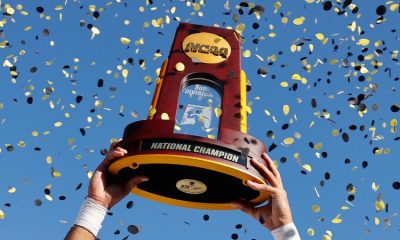
 Sports2 weeks ago
Sports2 weeks agoNew NCAA historical database provides wealth of information on championships
-

 Sports2 weeks ago
Sports2 weeks agoAdapti, Inc. (OTC
-

 College Sports2 weeks ago
College Sports2 weeks agoBuford DB Tyriq Green Commits to Georgia
-
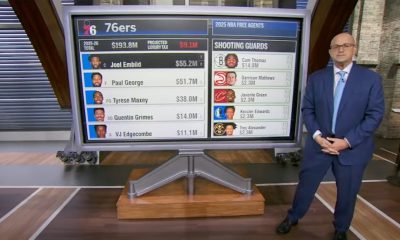
 Youtube3 weeks ago
Youtube3 weeks agoFREE AGENCY BREAKDOWN 🚨 What moves can the 76ers make? 🤔 | NBA Today



























